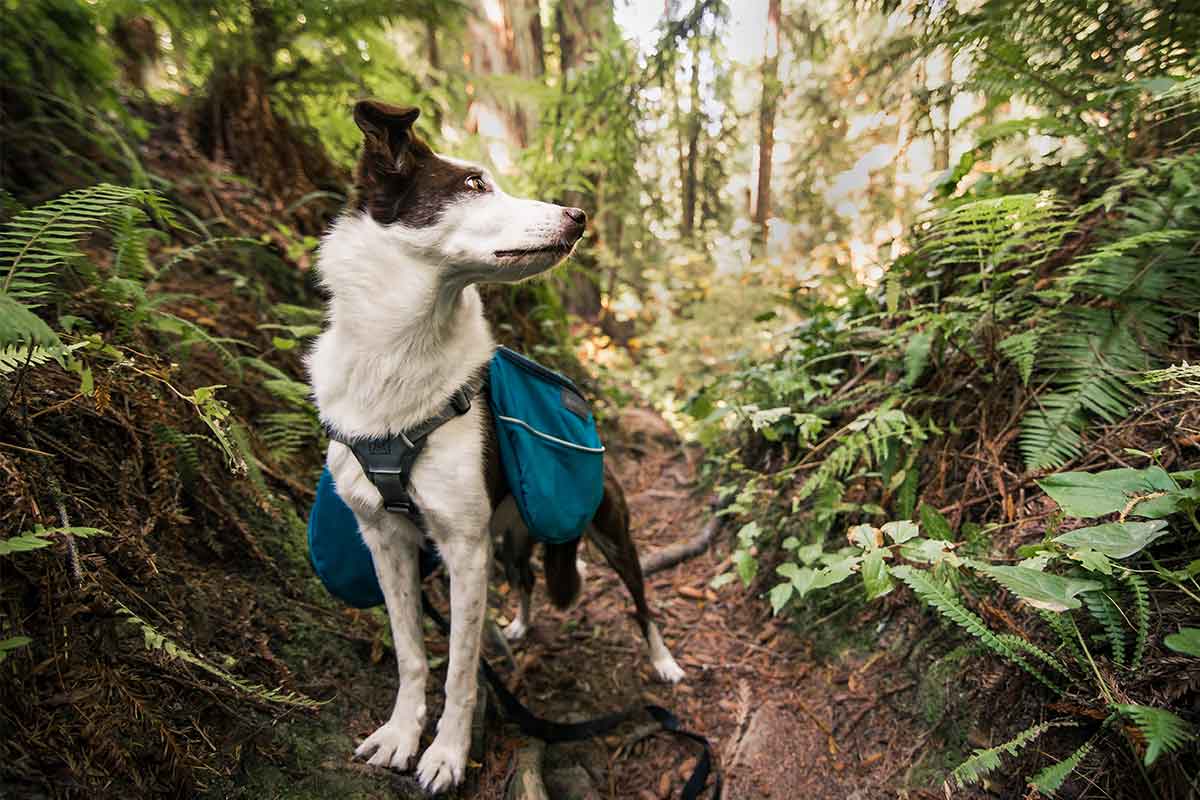“Don’t worry!” you call out. “He’s friendly!” Your dog is barreling down the wooded trail ahead of you, aiming his greeting at another hiker with a dog on leash. Your canine buddy just loves everyone, and you can tell he’s excited to make some new friends. You soon realize this is not going to happen, however, as the hiker starts berating you for having your dog off leash. She blusters by you with her dog in tow, leaving your dog confused and you annoyed. What’s the big deal?
If you are hiking with your dog in an area that requires him to be on leash, there are some issues that should concern you. Some are related to trail etiquette, and others concern the safety of wildlife and your dog.
Start with your leash. Check to see if the trail you’re on requires a specific leash. For example, some trails disallow retractable leashes because they offer the handler less control. A dog can be 25 feet away from you and if there’s trouble, you can’t get there in time to help. Keeping your dog close to you ensures you can intervene if a problem arises.
A dog who rushes up to a person or other dog is not demonstrating good manners. Sure, he may be friendly, but what if the person is terrified of or allergic to dogs? What if your dog frightens a child? What if the other dog isn’t as friendly, and there’s a scuffle? Your dog could get bitten … and if your dog is off leash but the other dog is leashed, you’re going to be the one at fault.
Off-leash dogs who bolt toward horses on the trail are dangerous. The horse could react in fear, putting the rider at risk. Horses can also kick a dog hard enough to seriously injure him, so you want to make sure your dog doesn’t go near those hooves.
Other animals are at risk from a loose dog, especially one who loves to chase wildlife. Would you be okay with your dog injuring a deer? Baby bunny? Some animals will bite or sting in self-defense. It’s certainly not going to be a fun ride home if your dog tangles with a skunk!
Even if you’re on a trail that doesn’t require a leash, is your dog truly ready to be off leash? Here’s a test: when you get to the trail, switch out your dog’s regular leash for a long line – at least 20 feet. Let your dog wander to the end of the leash and call him to come to you. Say the cue one time only. Does he run to you? Or does he aim in your direction, exploring along the way? Does he ignore you completely? A truly trained dog will come the first time you call him.
If your dog ran to you the first time, excellent! Practice a few more of these before trying him off leash. Remember to praise him and give him a treat when he comes to you. If he didn’t run to you, then he needs more training before he will be reliable off leash. You need to be able to call your dog to come to you on the trail and have him respond dependably.
Here’s another test: put your dog back on his regular leash and ask him to heel. If he doesn’t have a formal heel behavior, he at least needs to be able to walk right next to you without pulling. If he’s doing well with this, try it off leash. Is it still good? Great! If he starts wandering, then he needs more training. You need to be able to keep your dog close to you while you pass others on the trail or if there are hazards along the way.
It is wonderful to see a dog running along a trail, exploring and enjoying the best parts of being a dog. We have to temper that, however, with common courtesy to other people using the trail. Like them or not, rules are there for a reason. Unfortunately, all it takes is one person to ruin a hike for everyone. Don’t be that person!
This article was reviewed/edited by board-certified veterinary behaviorist Dr. Kenneth Martin and/or veterinary technician specialist in behavior Debbie Martin, LVT.








